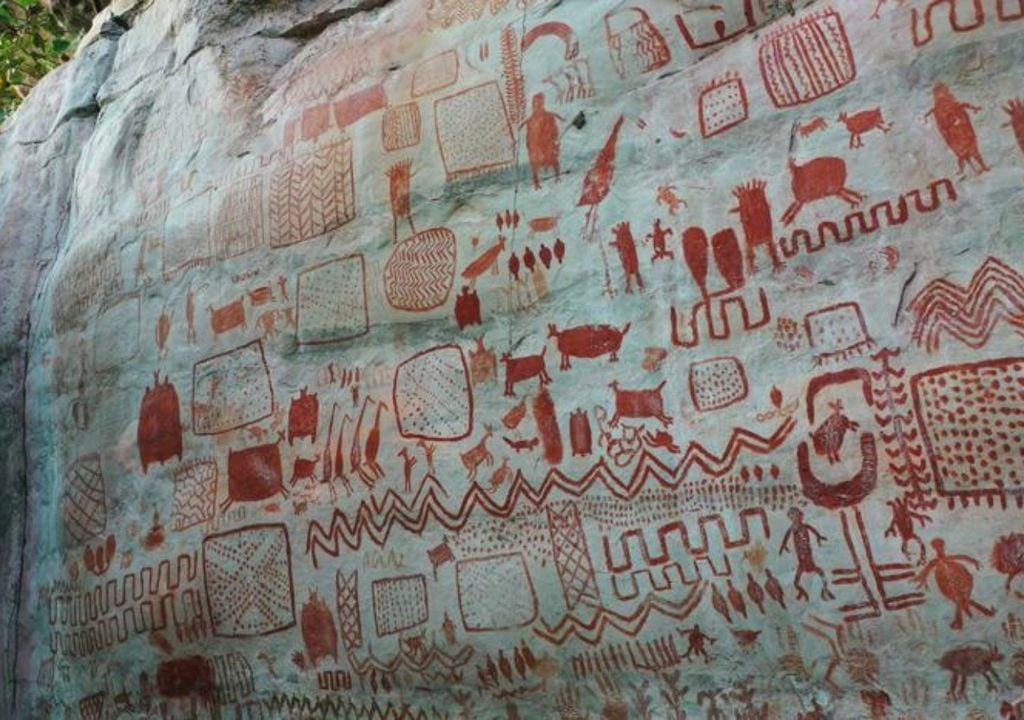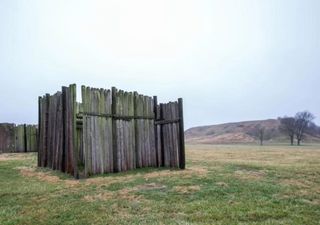Rock art discovered in the Amazon reveals the complex relationships settler’s had with animals
Rock art from the Colombian Amazon has provided archaeologists with a new insight into the complex relationships the people had with the animals they encountered and shared their lives with.

Incredible ochre rock art paintings of a variety of animals, including images of humans transforming into animals, display the rich mythology that surrounded and guided generations of indigenous Amazonians. 16 ‘panels’ of ochre paintings, with some only accessible by climbing using ropes, found at the rocky outcrop of Cerro Azul in the Serranía de la Lindosa are not yet accurately dated. They are likely to have been used as galleries for thousands of years, as far back as 10,500BC.
Evidence of earliest human settlers
The research that was led by an international team from the Universities of Exeter, Antioquia, Medellín, and Nacional de Colombia was published in the journal Anthropological Archaeology. The paintings and artwork were excavated alongside animal remains that revealed diverse diets, with fish, mammal, and reptile found. Though, the proportions of the animal bones found do not match the proportional representation of animals depicted in the art, suggesting that the settlers did not paint only the animals they ate.
“These rock art sites include the earliest evidence of humans in western Amazonia, dating back 12,500 years ago,” said Dr Mark Robinson, an Associate Professor of Archaeology at Exeter’s Department of Archaeology and History. “The art is an amazing insight into how these first settlers understood their place in the world and how they formed relationships with animals. The context demonstrates the complexity of Amazonian relationships with animals, both as a food source but also as revered beings, which had supernatural connections and demanded complex negotiations from ritual specialists.”
The team decided to focus their research on 6 panels from the site in detail. These included a 40 by 10 metre panel called El Más Largo containing over 1,000 images and a smaller 10 by 6 metre panel called Principal containing 244 extremely well preserved, vibrant red images. 3,233 images in total were catalogued from the panels, and were catalogued by form. Figurative images were the most common, making 58% of total images catalogued. More than half of those related to animals, and 22 different animals were displayed including birds, lizards, tapir, turtles and deer.
Even though fish remains were common at the archaeological site, they were only painted in 2 panels within fishing scenes. Big cats were completely absent, even though they are been found in art at other Colombian sites. The research team think that the artists may have been restricted on what they painted, and may not have been able to paint powerful animals such as jaguar. The images of figures combining animals and human characteristics display the complex mythology of transformation between human and animal states that can still be found in present day Amazonian populations.
Variation in animal species
The variation of animals depicted in the artwork and the archaeological remains show an understanding and exploitation of many different environments in the region, including flooded forests, rivers and savannahs.
“The Indigenous people of Cerro Azul and the surrounding lands hunted and depicted a diverse array of animals from different ecologies – from aquatic fish to arboreal monkeys; terrestrial deer to aerial birds, both nocturnal and diurnal,” said Dr Javier Aceituno, from Universidad de Antioquia, Medellín. “They had intimate knowledge of the various habitats in the region and possessed the relevant skills to track and hunt animals and harvest plants from each, as part of a broad subsistence strategy.”
“Our approach reveals differences between what indigenous communities exploited for food and what is conceptually important to represent – and not represent – in art," said Professor Jose Iriarte, from Exeter. "Though we cannot be certain what meaning these images have, they certainly do offer greater nuance to our understanding of the power of myths in indigenous communities. They are particularly revealing when it comes to more cosmological aspects of Amazonian life, such as what is considered taboo, where power resides, and how negotiations with the supernatural were conducted.”
Source of the news:
Robinson, M et al (2024). Animals of the Serranía de la Lindosa: Exploring representation and categorisation in the rock art and zooarchaeological remains of the Colombian Amazon. Journal of anthropological archaeology








